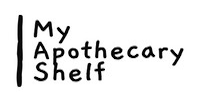
Preparations Reference
Capsule
The Basics: Dried herbal powders are placed in gelatin capsules. Major benefit is they are tasteless which is ideal for bitter or gross tasting herbs.
It is more difficult to regulate dosage, you can't take 1/2 a capsule. Another lesser known weakness from capsules is that it distances your body's senses from what you're taking. Your nervous system translates what you taste/smell and your body reacts accordingly, IE: Bitter herbs act to stimulate digestive secretions so taking them as a capsule form circumvents that trait of the herb.
It is more difficult to regulate dosage, you can't take 1/2 a capsule. Another lesser known weakness from capsules is that it distances your body's senses from what you're taking. Your nervous system translates what you taste/smell and your body reacts accordingly, IE: Bitter herbs act to stimulate digestive secretions so taking them as a capsule form circumvents that trait of the herb.
Compress
The Basics: A cloth pad is soaked in an Herbal extract, usually decoction or infustion, and then applied to the skin. Usually for headaches, burns, bites, and stings.
Poultices and Plasters
The Basics: Mixture of dried or fresh herbs moistened with water or oil and applied externally. Poulitice is usually a hot treatment, while a plaster is usually room
temperature. If using dried herbs, boid for up to 5 minutes or mix with small amount of boiling waer. Use layers of gauze (or plantain leaves!) to contain the mixture.
Decoction
The Basics: Used with hard materials (roots, bark seeds) to extract minerals and bitter principles.
Boiling for at least 10 minutes and steep for several hours. tea will be boiled down and concentrated, usually needs water added before drinking.
Glycerite
The Basics: Glycerin is nontoxic and appropriate for small children, alcoholics, or other people that can't use alcohol.
They're not usually as strong as tinctures so larger doses are often required. It also has it's own sweetness so can mask necessary flavours of herbs (see note on Bitter below).
Glycerites don't have as long a shelf life as tinctures but properly made can last several years. Heat is required to extract constituents.
Lotion
The Basics: Mixture of oil and water, usually used as a moisturizer. Lotions need to include a preservative to prevent mold and bacteria. Rosemary
essential oil and vitamin E are both very good choices and can extend shelf life.
Butters
The Basics: Usually a blend of 2 oils - 1 solid at room temparature, 1 liquid.
Linament
The Basics: Similar to tinctures but with rubbing alcohol instead. ONLY FOR EXTERNAL USE!!
Oil
The Basics: Oil extraction is most often used for topical applications or as base for salves and ointments. Many herbs or their constituents can't be
extracted directly so a 2 stage process is used. Alochol or water based extraction is done first and then oil is later added.
Tincture
The Basics: Liquid medium (usually mixture of alcohol and water) used to extract herbs medicinal constituents. Has the longest shelf life of any preparation.
Excellent for specific control of the dosage by the drop and herbal constituents are absorbed into the bloodstream quicker. It is alcohol but the dosage is extremely small. You can remove some
of the alcohol the same way chefs do, by heating it. Bring an ounce of water to a boil, remove it from the heat and add the dosage of alcohol tincture and let it sit. 5 minutes will evaporate
roughly 15% of the alcohol. It would take almost 4 hours to remove all alcohol. You can also dilute the dosage in a glass of water etc as well.
Infusion
The Basics: The basic tea or tisane. Used with soft ingredients (leaves, flowers etc), steeps (covered!) for only a
couple of minutes to extract the vitamins and volatile ingredients. Hot infusions are most common but cold infusions are recommended for more delicate flowers,
usually the more aromatic herbs.
Syrup
The Basics: It's similar to a decoction but is done with a mixture of water and a sweetener - commonly raw sugar or honey, usually 50/50.
Effective at hiding the taste of bitter herbs and commonly used for cold and flue remedies. Very useful when having to dose children. Note: Honey has it's own naturual medicinal
properties. They have a very short lifespan, even refrigerated they'll usually only be good for a month or so. Adding alcohol can extend this.
Salve
The Basics: Semi solid made with an herbal oil base combined with wax (bees or candelilla). Ointments are similar, with different ratios of oil and wax.
Add vitamin E (for preservation), essential oils or lanolin when the mixture is cooling.
Cordial
The Basics: Tincture combined with a sweetener (other herbs, fruit) or a sweet liqeur like brandy, sherry, port etc. Often used to aid digestion etc.
Electuary
The Basics: A mixutre of herbs and a good-tasting base (honey, fruit preserves) rolled into balls for consumption.
Vinegars or Acids
The Basics: Most commonly used for culinary herbs. Not as potent as tinctures or glycerins, and have a shorter shelf life.
Vinegars are very good at extracting minerals like calcium and alkalines. Also ideal for extracing aromatic and pungent herbs for formuals like ciders.
